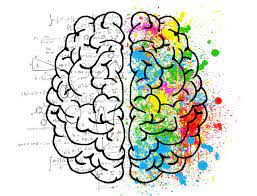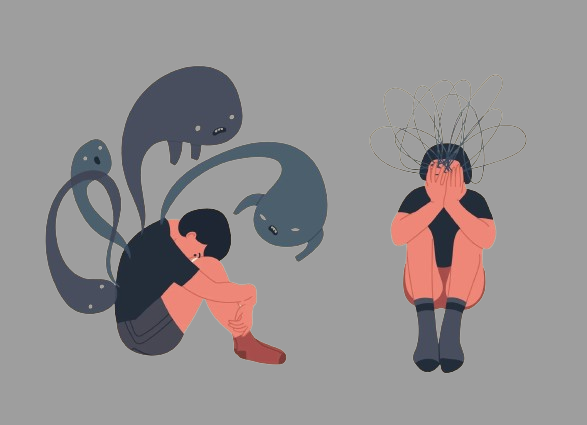Using cognitive restructuring approaches, harmful ideas are disassembled and rebuilt in a more realistic and balanced manner. The majority of people occasionally have negative thought patterns, but occasionally these patterns get so ingrained that they impede relationships, success, and even general well-being.
A collection of treatment methods known as cognitive restructuring assists patients in identifying and altering harmful thought patterns. Mental health professionals can assist you in identifying strategies to reroute and interrupt harmful thought patterns. Cognitive reorganization is capable of doing that.
Cognitive restructuring.
People have had success changing the way they think by using a technique called cognitive restructuring. The aim of stress management techniques is to substitute more balanced, stress-free thinking with cognitive distortions, or thoughts that cause stress.
The first step in using the approach is to identify a stressful circumstance together with the associated thoughts and sensations. After that, you analyze the ideas by figuring out what is and is not true about them. Eventually, you formulate a different, more sensible idea and decide what will happen to you (the result) if you start thinking in this new way.

Example 1
Situation:
I was not invited to this weekend’s dinner with some pals.
Thought:
I’m not liked by my buddies. They consider me to be uninteresting. I won’t have any pals in the end.
Feelings
Sad sentiments are felt. Unlike. By yourself. tense.
Evidence to back up the idea:
I do occasionally feel moody.
Evidence against the theory:
I’ve heard from friends multiple times that I’m entertaining and that I make them laugh. No invitations to other events have been extended to other friends. I am invited to most events, yes.
A more sensible or balanced idea would be:
Just because my friends like me doesn’t imply they have to invite me to everything.
Result:
I’m happier. I’m not worried about this anymore.
What is the mechanism of cognitive restructuring?
The foundation of cognitive behavioral therapy, a well-researched talk therapy strategy that is useful in treating a variety of mental health issues, is cognitive restructuring. Among them are:
- depression
- disorders of anxiety
- eating disorders
- problems related to substance usage
- personality disorders
In cognitive behavioral therapy (CBT), you practice strategies to help remodel negative thought patterns and collaborate with a behavior therapist to discover problematic thought patterns. Psychiatrists, psychologists, and other mental health specialists who specialize in CBT are among these mental health professions.
It can be challenging to identify false beliefs in your cognitive processes. For this reason, when you start cognitive restructuring, experts usually advise seeing a therapist.
Cognitive distortions
Cognitive distortions are mental patterns that lead to a skewed perception of reality that occasionally affect people. in addition These kinds of thinking frequently result in self-defeating habits, relational issues, anxiety, and despair.

Some instances of cognitive distortions are as follows:
- thinking in black and white
- catastrophizing
- overgeneralization
- personalization
One way to become aware of these maladaptive thoughts as they arise is through cognitive restructuring. After that, you can try rephrasing them in a way that is more precise and beneficial.
The idea behind this hypothesis is that you might be able to alter your thoughts and behaviors by altering the way you see particular situations or events.
Techniques of cognitive restructuring
While anybody can utilize cognitive restructuring strategies to change the way they think, moreover working with a behavioral therapist is often more beneficial.
Finding out which cognitive distortions are influencing you might be facilitated by a therapist. They can help clarify the reasons behind illogical or incorrect thinking.
You can also learn how to “question” and restructure negative thought patterns into more constructive ones with the assistance of a therapist.
Here is a quick overview of some of the cognitive restructuring techniques:

Self monitoring
You must be able to recognize the mistake you’re making in order to alter an ineffective cognitive pattern. The key to cognitive restructuring is being able to identify the thoughts that lead to unfavorable emotions and mental states.
Observing the location and time of the thoughts’ emergence is also beneficial. In some circumstances, you might be more susceptible to cognitive distortions. Recognizing those circumstances could enable you to plan beforehand.
If you’re an anxious student, for instance, you might see a trend of catastrophizing during exams. Perhaps you have a pattern of thinking along these lines: I will undoubtedly fail this test, this course, and I won’t be able to graduate with everyone else. Everyone will be aware of my failure.
Understanding your sensitivity can enable you to identify and modify negative thoughts before they overwhelm you.
Journaling can be beneficial for certain individuals during this period. If you write down your thoughts, you might be able to identify a cognitive distortion or pattern even if you aren’t sure what initially caused your fear or grief.
You should be able to identify distorted thought patterns more rapidly as you continue to practice self-monitoring.
Contesting your presumptions
Learning to challenge your beliefs and presumptions is a crucial component of cognitive restructuring, in addition particularly when those beliefs appear to stand in the way of leading a fruitful life.
You can learn from a therapist how to use Socratic questions to find the places and ways in which your autonomic thoughts are irrational or biased.
Among the inquiries you may have are:
- Is this idea supported by facts or feelings?
- What is the proof that this idea is correct?
- What proof is there that this idea is incorrect?
- How might I verify this belief?
- What could possibly go wrong? In the worst case scenario, how would I react?
- What alternative interpretations might one make of this information?
- Are there any gray areas in this situation, or is it purely black and white?Doubting your
For example, if you are prone to catastrophizing, and you may be inclined to anticipate the worse in tense circumstances. You could challenge this mental tendency by asking yourself to enumerate every scenario that could occur. You could consider the likelihood of each potential result.
By asking questions, and you can open your mind to alternative scenarios that might not be as dire as the disastrous ones you might be afraid of.
Assembling evidence
Getting evidence is a crucial part of cognitive reorganization.
You may choose to record the circumstances—such as who you were with and what you were doing—that set off a reaction. You might want to note the intensity of each response and the memories that surfaced as a result.
Additionally, you may collect data to support or refute your ideas, presumptions, and views. Although cognitive distortions are erroneous and biased, they can also become profoundly ingrained. To remove and replace them, proof of their rationality is needed.
It could be necessary to compile a list of facts that support a view and contrast it with evidence suggesting the belief is erroneous or skewed.
What advantages exist?
After you understand how cognitive restructuring works, and you can practice it on your own, even though working with a therapist initially is beneficial.
There are numerous advantages to being able to recognize and alter your negative thought patterns. For example, it could be useful to:
- reduce tension and anxiety
- improve your ability to communicate and create more wholesome connections
- swap out unhealthy coping strategies like drug abuse
- regain your self-worth and confidence
What kinds of problems is cognitive restructuring useful for?
CBT is suggested by the American Psychological Association to assist with:
- eating disorders
- anxiety and depression
- PTSD, substance abuse,
- mental health conditions,
- and marital issues
It can also support you through trying times like divorce, a life-threatening disease, or losing a loved one.
Cognitive restructuring can support you in challenging and altering problematic thinking patterns that arise in any setting where negative thought patterns originate.




Pingback: Hysterical Amnesia: causes, signs, diagnosis, & treatment. -
Pingback: Bipolar relapses: symptoms, triggers & strategies to avoid -
Pingback: Cocaine and Depression: treatment & causes -